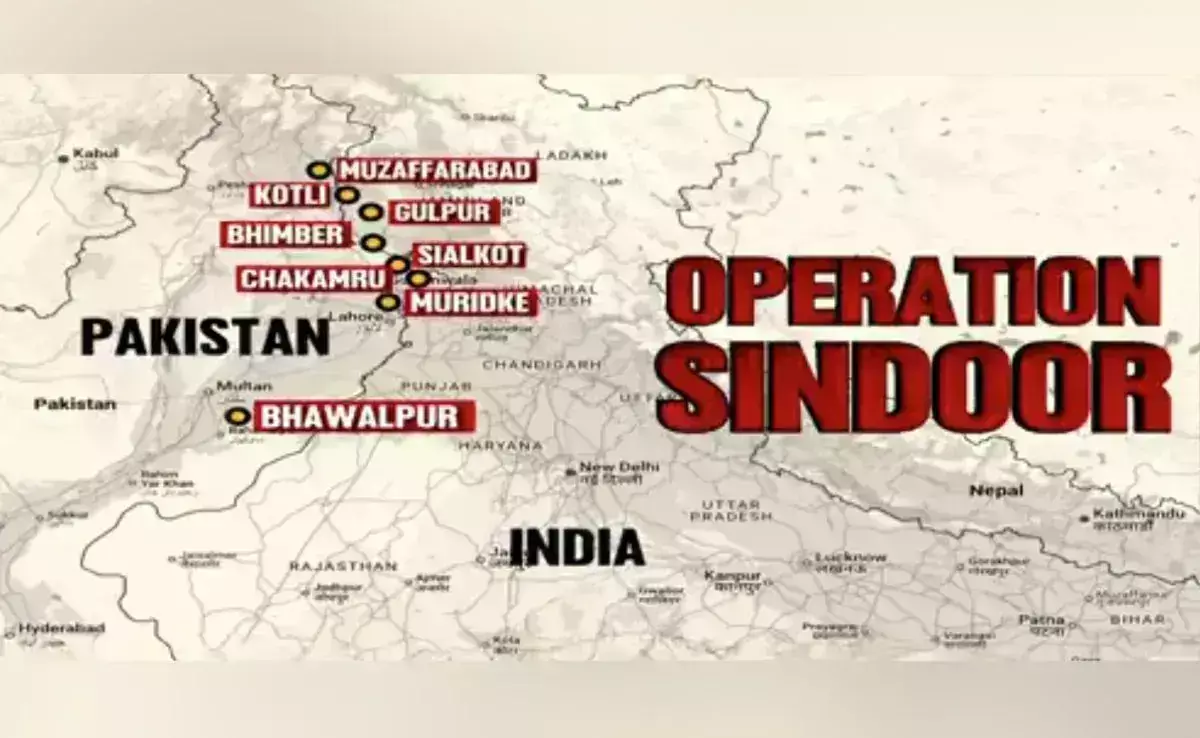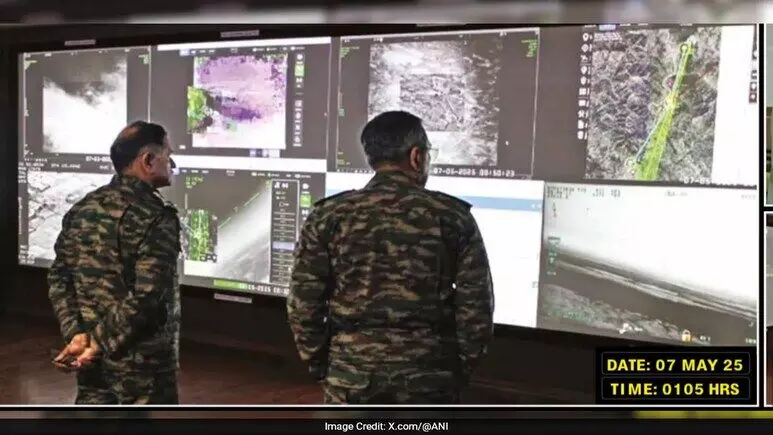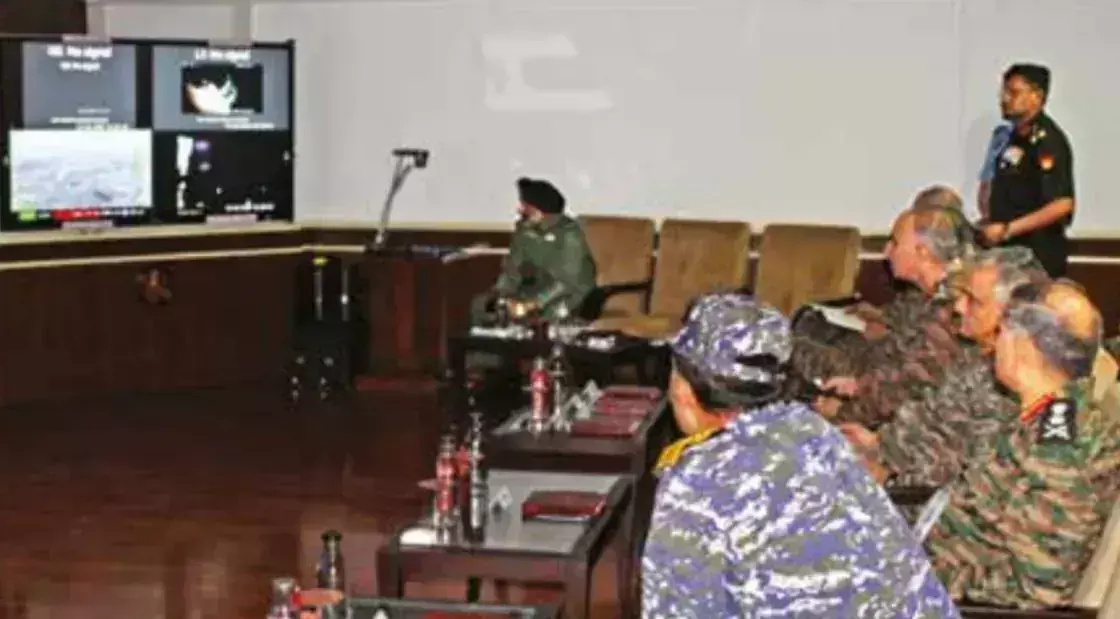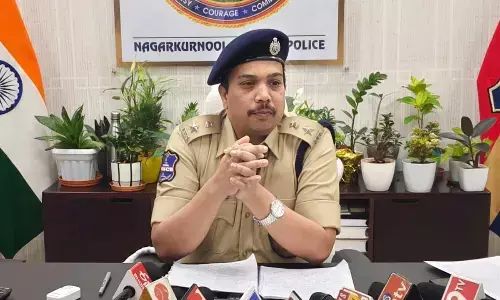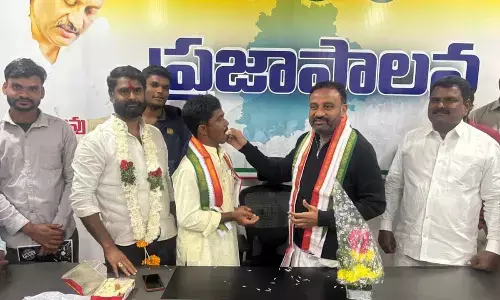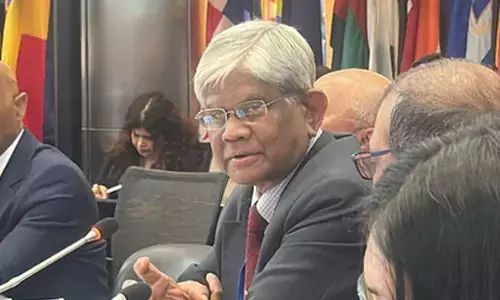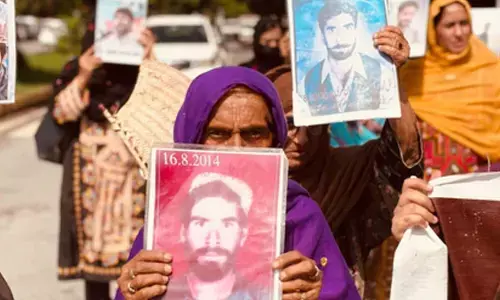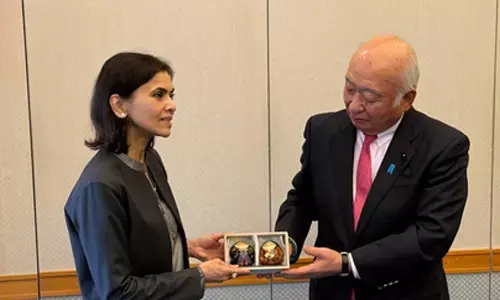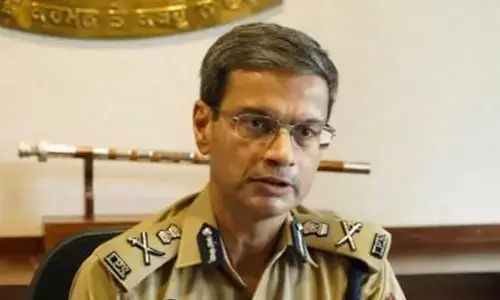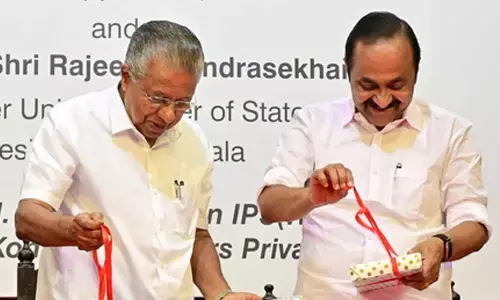New Photos Reveal Military Chiefs Monitoring Operation Sindoor Strikes on May 7
New photos show India's Army, Navy & Air Force chiefs monitoring May 7 strikes on terror camps in Pakistan during Operation Sindoor.
Newly released images from the Indian Army provide a rare glimpse into the war room during Operation Sindoor, where the heads of India's three armed forces were seen overseeing precision air strikes conducted on May 7 against terrorist infrastructure in Pakistan and Pakistan-Occupied Jammu and Kashmir (PoJK).
The photos show Army Chief General Upendra Dwivedi, Navy Chief Admiral DK Tripathi, and Air Force Chief Air Chief Marshal AP Singh alongside a senior Army officer, closely monitoring live drone footage, satellite imagery, and real-time mission data.
Coordinated Retaliation for Pahalgam Attack
The operation was launched in response to the Pahalgam terror attack, where 26 civilians were killed in the Baisaran Valley. Codenamed Operation Sindoor — a tribute to the widows of the victims — the strikes targeted multiple high-value terror locations.
One of the photos, timestamped 1:05 am on May 7, captures General Dwivedi and the senior officer intently observing mission feeds as Indian fighter jets, SCALP cruise missiles, and drones struck nine terror-linked sites, killing more than 140 terrorists.
Targets included terror hubs used by Lashkar-e-Taiba (LeT), Jaish-e-Mohammed (JeM), and Hizbul Mujahideen, located in Bahawalpur, Muridke, Sialkot, Chakamru, and multiple locations in PoJK, such as Kotli, Bhimber, Gulpur, and Muzaffarabad.
Key Terror Facilities Targeted
- Muridke: Headquarters of Lashkar-e-Taiba, led by Hafiz Saeed
- Bahawalpur: Operational base of Jaish-e-Mohammed, associated with Masood Azhar
These locations have long been flagged by Indian intelligence and international observers as training and logistics hubs for cross-border terrorism.
Pakistan Retaliation and India's Defensive Shield
Following the strikes, Pakistan launched artillery fire and conducted drone and missile attacks on Indian military positions and civilian areas in Jammu and Kashmir. India’s multi-layered air defence network — consisting of systems like MANPADS, Spyder, Akash, MRSAM, and S-400 — was instrumental in intercepting and neutralizing incoming threats.
Also read: Guardians of the Sky – Inside India’s Air Defence Network
India's Measured Counter-Offensive
In response to Pakistan’s escalation, India launched a precision retaliation targeting 11 Pakistani air bases, including:
- Sargodha
- Nur Khan (Chaklala)
- Bholari
- Jacobabad
- Sukkur
- Rahim Yar Khan
- Skardu
- Pasrur
- Murid
- Rafiqui
- Chunian
On May 8, Indian forces also targeted an air defence system in Lahore using an armed drone. Satellite imagery accessed by NDTV reveals significant damage at key installations including Sargodha, Chaklala, and Jacobabad, confirming the impact of India’s strategic response.
A Shift in Security Doctrine
In a national address following the operation, Prime Minister Narendra Modi unveiled a new security doctrine, stating that:
- India will no longer tolerate nuclear brinkmanship from Pakistan.
- Any future dialogue with Islamabad will focus solely on terrorism and Pakistan-Occupied Jammu and Kashmir.
- The nexus between Pakistan’s state machinery and terrorist organizations is now “exposed and undeniable.”
Calling Muridke and Bahawalpur the “global universities of terror,” the Prime Minister linked these sites to international terror attacks, including 9/11 and the London Tube Bombings.


